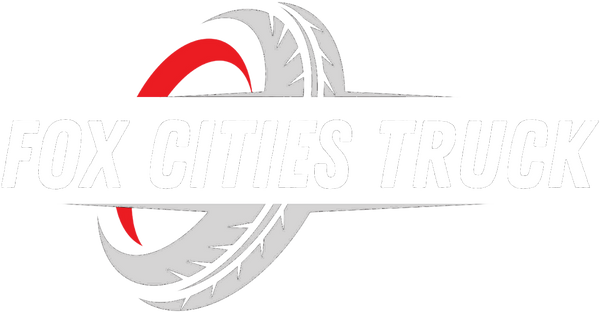
Pros and Cons of Lift Kits for Trucks
Share
Thinking about installing a lift kit on your truck? Maybe you’ve seen one rolling down the highway—big tires, tall stance, towering presence—and thought, “That looks awesome. Should I do that too?”
Before you take the plunge, it’s smart to weigh the truck lift kit pros and cons. Because while these kits definitely turn heads, they can also bring unexpected challenges. So, let’s break it all down in simple, honest terms—just like a conversation with a truck-loving friend.
What Is a Truck Lift Kit?
A truck lift kit is a modification that raises your vehicle’s body or suspension. This gives your ride extra height—either for off-road clearance, bigger tires, or just that bold, commanding look.
There are two main types: body lift kits (which raise the body off the frame using spacers) and suspension lift kits (which raise everything, including the suspension components). Both have their place, depending on your goals.
Pro: Increased Ground Clearance
Ever feel like your truck is too low when driving on rocky trails or deep snow? A lift kit gives you more ground clearance, meaning the underside of your truck is farther from the road. This can help you avoid damage from rocks, debris, or potholes, especially if you go off the beaten path.
Pro: Better Off-Road Performance
Lift kits are practically built for adventure. They improve approach and departure angles, letting you conquer steeper hills and rougher terrain. Think of it like putting hiking boots on your truck—it’s simply better equipped for wild paths.
Pro: Eye-Catching Appearance
Let’s be honest: a lifted truck just looks cool. It commands attention. If style and presence matter to you, a lift kit is a powerful way to stand out. Whether you’re pulling into a show or just your driveway, people will notice.
Pro: Bigger Tires, More Possibilities
A lifted truck makes room for larger tires, which not only look tougher but also offer better traction on mud, snow, and sand. More tire options mean you can customize your setup for performance or aesthetics—or both.
Con: Higher Cost
Here’s the reality check: lift kits aren’t cheap. Beyond the kit itself, you may need new shocks, control arms, driveshafts, and more. And that’s not counting labor if you’re not installing it yourself. Expect to spend $1,000 to $5,000 or more, depending on the kit and vehicle.
Con: Reduced Fuel Efficiency
All that extra height and bigger tires? They come at a cost—fuel economy. Lifted trucks have more wind resistance and added weight, which can reduce MPG significantly. That trip to the gas station might become a lot more frequent.
Con: Handling and Stability Issues
With a higher center of gravity, your truck may not handle as well—especially around corners or in emergency maneuvers. You might feel more body roll, and the ride could be bumpier depending on how the suspension is adjusted.
Con: Legal and Insurance Headaches
Some states have laws about how high you can lift your vehicle. If you go too extreme, you might face fines or fail inspection. Insurance companies might also increase your premium—or worse, refuse coverage—because of the added risk.
Con: Harder to Get In and Out

This one’s often overlooked. A lifted truck can be tough for kids, shorter adults, or pets to climb into. Unless you install side steps or running boards, you’ll find yourself doing a little hop every time you get in.
Types of Lift Kits: Body vs. Suspension
A body lift kit raises only the body using spacers. It’s cheaper and easier to install but doesn’t improve performance.
A suspension lift kit raises the whole truck, including wheels and axles. This gives more clearance and travel for off-roading—but at a higher cost.
Is It Worth Lifting a Daily Driver?
If your truck is your daily driver, a big lift might not be practical. Think about comfort, gas mileage, parking garages, and long commutes. For many, a mild lift strikes the right balance between form and function.
What About Warranty and Resale Value?
Some modifications could void your manufacturer’s warranty, especially if not professionally installed. Also, not everyone wants a lifted truck—so resale value might drop, unless you find a like-minded buyer.
DIY or Professional Installation?
Installing a lift kit isn’t as simple as a plug-and-play upgrade. You’ll need mechanical skills, tools, and time. If done wrong, it can affect safety and drivability. For most folks, professional installation is the way to go—even if it costs more.
Final Thoughts: Weighing the Good and the Bad
A truck lift kit can be a fun and functional upgrade, especially for off-road lovers or anyone who wants a more rugged look. But it's not all sunshine and mud trails—it can be costly, complicated, and even risky without the right planning.
It’s kind of like wearing hiking boots in everyday life. Great for the trail? Absolutely. But not always comfy at the mall.
Before you commit, weigh the truck lift kit pros and cons carefully. Think about your lifestyle, budget, and how often you really need that extra clearance or bold look.
Frequently Asked Questions (FAQs)
1. Do lift kits affect gas mileage?
Yes, they often reduce gas mileage due to increased wind resistance and weight from larger tires.
2. Are lift kits safe for highway driving?
They can be, if installed properly. However, higher center of gravity may affect handling at high speeds.
3. Will a lift kit void my truck's warranty?
It depends. Some warranties may be partially voided if the lift causes related damage. Always check with your manufacturer.
4. Can I install a lift kit myself?
If you have mechanical experience and the right tools, yes. But professional installation is safer for most people.
5. What is the best lift height for a truck?
It depends on your needs. For looks, 2–4 inches may be enough. For serious off-roading, 6 inches or more might be better.
